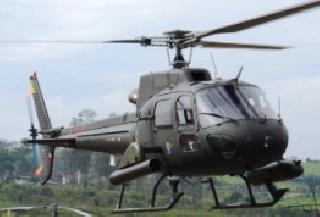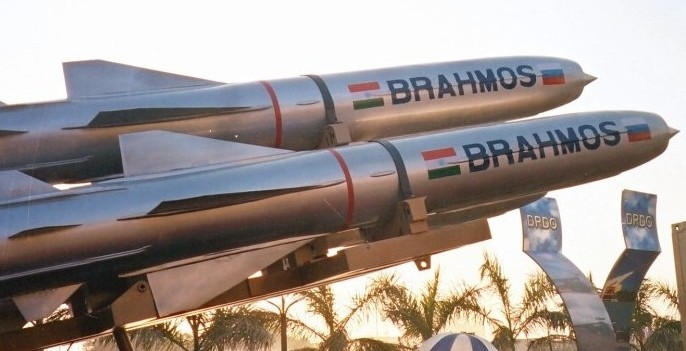
Work has started to produce the hypersonic version of BRAHMOS.
MOSCOW (PTI): The success of Indo-Russian JV BrahMos for the development and production of lethal cruise missiles has set a "Golden Standard" for future joint defence projects with greater Indian participation, according to a respected defence publication here.
"BrahMos has been an unqualified success.
The numerous benefits it has already yielded include: commercial profit for both partners; a tangible improvement in the fighting ability of the Indian Army, Navy and Air Force; development of new technologies, which has been especially important to the Indians; a chance for Russia's NPO Mashinostroyeniya corporation to put its potential for innovation to good use," Moscow Defense Brief (MDB) quarterly writes in its latest issues.
"The BrahMos Aerospace Ltd. joint venture has become a vehicle for future implementation of other Russian-Indian projects, on an even large scale and with greater Indian participation," the journal notes in an article contributed by top defence expert Dr Ruslan Pukhov.
It underscored that the valuable experience of BrahMos, a fifty-fifty JV between Defence Research and Development Organisation (DRDO) and Russia's NPO Mashinostroyeniya, in overcoming various legal, organisational and financial hurdles, will be invaluable during the implementation of other bilateral programmes, including the future joint projects of Multi-role Transport Aircraft (MTA) and fifth generation fighter aircraft (FGFA).
The company is known to be already working on new hypersonic BRAHMOS missile. But the unique experience accumulated as part of the BrahMos programme since 1998 has paved the way for even more ambitious goals, including new strategic ballistic and cruise missiles.
"For India, BRAHMOS has become one of the first standardised weapons systems which can be deployed by all three armed services - the Army, the Navy and the Air Force," MDB underscores.
It noted that the Indian Navy was the initial customer for the new missile, which can be carried by a variety of naval platforms.
These include the majority of the existing and future surface ships. The first ships to be equipped with BRAHMOS were Project 61ME (Kashin-Mod class) destroyers.
Two of them, the Ranvir and the Ranvijay, will also be armed with 8-missile vertical launch systems.
Other ships that will carry BRAHMOS include three Project 15A (Kolkata class) destroyers now being built in India, the future Project 15B destroyers, future Project 17A frigates and three Project 11356M (Talwar class Batch 2) frigates now being built for India at the Yantar Shipyards in Kaliningrad.
The future Talwar class Batch 3 frigates will also be equipped with the new missile system, regardless of where they will be built. In addition to surface ships, the Indian Navy plans to deploy BRAHMOS on submarines and possibly on land-based patrol aircraft.
The suitable airborne carriers of the missile include the Russian Il-38SD ASW aircraft and, in a few years' time, the Boeing P-8I Poseidon ASW aircraft which India has ordered from the US.
The Indian Army has bought hundreds of BRAHMOS missiles in the mobile land-based configuration.
These will be used not only against ships but also as a high-precision weapon against land targets such as command posts and key infrastructure facilities (the Block II LACM version).
The Indian Army has ordered 134 mobile anti-ship land-based BRAHMOS Block I missiles in 2006-2009 and another 240 land-attack BRAHMOS Block II in 2010, for a total of about 3 billion dollars.
Meanwhile, the Indian Air Force (IAF) is awaiting the completion of the development of an air-launched version of BRAHMOS, to be deployed primarily with the Su-30MKI fighters.
The Su-30MKI-BRAHMOS weapons system will be a truly lethal combination. First deliveries are expected in 2012.
At some point the IAF will also receive the BRAHMOS Block II version, which is designed to engage land targets.
MDB does not rule out that the 126 medium multirole fighters (MMRCA) for which India has announced a contract will also be fitted with the BRAHMOS missiles.
"Not only the MiG-35 fielded by Russia in the MMRCA tender, but its Western rivals - the F/A-18, Rafale and Typhoon fighters can all serve as carriers of BRAHMOS Block II missiles," Moscow Defense Brief writes.
The missile's ability to be launched from a wide range of platforms and engage a variety of targets has generated very large sales.
At present the demand of the Indian armed forces is estimated at 1,000 such missiles at the very least.
In fact, the need to fulfil the Indian orders is holding back exports to other countries.
The most conservative estimate for the size of the market for BRAHMOS throughout the life of the project is 2,000 missiles, worth over $ 10 billion.
"For Russia, the success of BRAHMOS has improved the chances of winning Indian contracts for aviation and naval platforms.
It is usually the exports of platforms that normally drive the sales of weapons to be fitted onto those platforms.
"But in the case of BRAHMOS, it is the other way around: the missile is driving the sales of aircraft and submarines that can carry it," Dr Pukhov writes in the journal.
 Previous Article
Previous Article Next Article
Next Article














The Indian Air Force, in its flight trials evaluation report submitted before the Defence Ministry l..
view articleAn insight into the Medium Multi-Role Combat Aircraft competition...
view articleSky enthusiasts can now spot the International Space Station (ISS) commanded by Indian-American astr..
view article